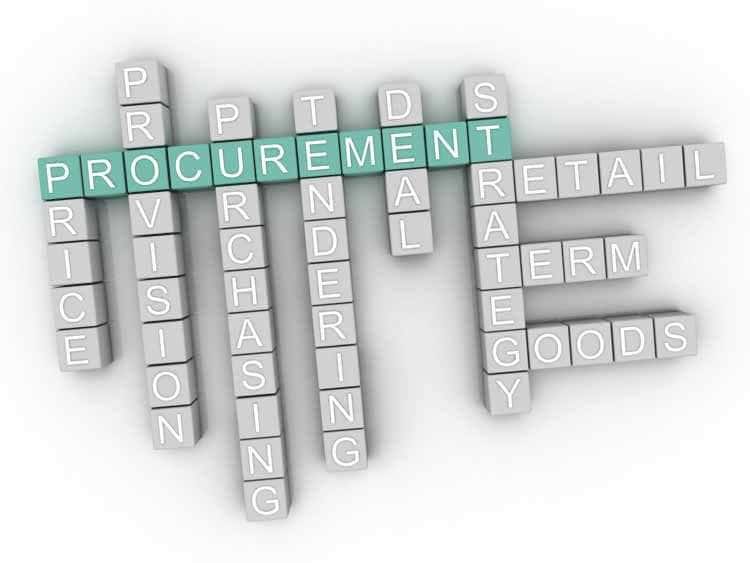-
What Is The Difference Between Procurement, Purchasing, Sourcing, Purchase Orders, and Requisitions?
As you read about business purchasing and procurement, you’ll start to notice people using several different terms. Words like procurement, purchasing, and sourcing are often used interchangeably. The same goes for the paperwork involved, such as purchase orders and requisitions.
While all these things are connected, they’re not the same. Understanding the differences and connections between all these terms can give us a better understanding of what’s going on in the procurement department. As we go through these terms, we’ll also look at how each of them relates to digital procurement software like we offer here at NextProcess.

What is Procurement?
Let’s start with procurement. To get technical, procurement is a business management function that includes the acquisition of products and services. The procurement department is responsible for a variety of tasks, which include locating suppliers, handling purchasing paperwork, and placing orders.
As an over-arching concept, procurement includes purchasing and sourcing as well as purchase orders (POs) and requisitions. You can think of this as the catch-all category for the other terms we’re looking at in today’s post.
Steps in the Procurement Process
Sourcing
Sourcing is the part of the procurement process that happens before you purchase products. This process is all about finding the best source for the products your company needs. Sourcing involves comparing prices and negotiating discounts. One of the key goals for this step is to find high-quality products at affordable prices.
One way that automation software can help with this part of the process is by enforcing your procurement department’s sourcing choices. For example, NextProcess’ punch-out and item catalogs make it easy for employees to shop for approved products within the purchasing system. That helps reduce, or even eliminate, maverick spending.
Purchasing
Purchasing is the aspect of procurement that people typically think about when they think of procurement. This is the step where you place orders for items from approved suppliers. This process involves placing procurement orders, communicating with suppliers, receiving goods and services, and verifying invoices before sending them on to accounts payable.
Digitizing procurement and purchasing makes this step easy. With business process automation software, the system automatically generates purchase orders for each purchase. This means you’ll have an easier time matching POs with goods received and invoices. Plus, if you also automate accounts payable with NextProcess, the software communicates to make information sharing simple.
Procurement Paperwork
Requisitions
When someone in the company wants to place a procurement order for goods or services, they can submit a requisition to the procurement department. Depending on your company’s purchasing policy, not all purchases require a requisition. For example, you might let employees order a couple of boxes of paper clips without requiring a requisition. A larger purchase like 10 cases of paper clips might require employees to submit a requisition request.
When you’re using NextProcess’ purchasing module, whether to require requisitions is the type of setting you can customize. You get to choose which employees have access to the purchasing software and which types of purchase requests require approval before the system creates a purchase order. One of the great things about NextProcess is that you never pay extra for adding additional users. You won’t pay extra even if you want to give every employee in your company access to the purchasing portal.
Purchase Orders
When your company places an order with a seller, you’ll typically submit a purchase order to your supplier. The PO serves as a legal document laying out what you’re purchasing, how much of that item or service you want, and the price you expect to pay. POs provide important records you can use to track approved requisitions, company spend, and expected shipments.
NextProcess’ software generates purchase orders automatically for every purchase your employees make through the software. This saves time and helps free up the purchasing department to focus on tasks other than routine paperwork. It also generates accurate, digital records. You can run keyword searches or generate reports easily within the software, giving you improved access to important purchasing data.
Tying It All Together
Every aspect of the procurement process must work together for a company’s procurement department to function. One of the biggest challenges in creating a procurement system that works smoothly is that many companies are still relying on manual, paper-based processes. The more you rely on paper, the more challenging it is to streamline, standardize, and implement best practices in your procurement department.
When you implement procurement-purchasing automation in your company, it’s going to improve every aspect of the process. The easy-to-use software makes comparing different suppliers easy and helps simplify sourcing. It automatically tracks every aspect of purchasing and streamlines the entire process. Employees can enter requisitions directly into the system. This makes it easy to generate purchase orders and to make sure all purchases comply with your company’s custom policies.
If you’d like to learn more or see first-hand how NextProcess would work in your company, contact us today. We’ll be happy to answer any questions you have and schedule a free demo.